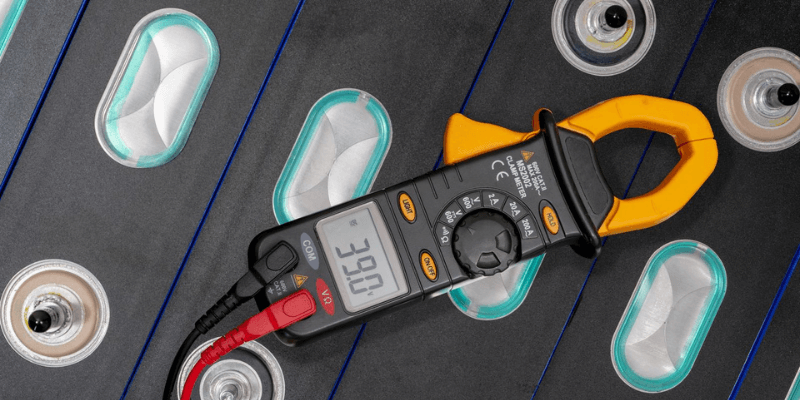Akkus laden, von Laptops bis hin zu Elektrofahrzeugen, erfordert den richtigen Tarif basierend auf der Batteriechemie. Rund 50 % unserer Kunden bevorzugen die schnellere Ladelösung für Batterien, aber nur 1 % ist sich der potenziellen Gefahren eines zu schnellen Ladens bewusst. In diesem Blogbeitrag befassen wir uns mit dem Schnellladen und seinen Sicherheitsaspekten.
Welche Batteriechemie ermöglicht schnelles Laden?
Nicht alle Akkus können schnell aufgeladen werden. Das Verständnis der Batteriechemie, des Stromverbrauchs und der Laderaten wird Ihnen dabei helfen, die richtige Lademethode zu finden.
Laden von Blei-Säure-Batterien
Blei-Säure-Batterien werden typischerweise langsam mit einem Konstantstrom-/Konstantspannungsansatz aufgeladen. Das Ladegerät hält einen voreingestellten Strom und eine voreingestellte Spannung aufrecht, mäßigt den Strom, bis die voreingestellte Spannung erreicht ist, und reduziert ihn dann, bis der Akku vollständig aufgeladen ist.
Bei Blei-Säure-Batterien wird die konstante Ladung fortgesetzt, bis eine Spannung von 70 % erreicht ist. Anschließend reduziert das Ladegerät den Strom für die letzten 30 % der Spannung, was als Spitzenladung bezeichnet wird. Im Gegensatz zu anderen Batterien können Blei-Säure-Batterien einer Erhaltungsladung unterzogen werden, um eine Selbstentladung zu verhindern, wenn das Ladegerät diese Option unterstützt.
Laden von Nickel-basierten Akkus
Nickelbasierte Akkus wie NiMH und NiCad können mit schnellen, schnellen oder ultraschnellen Methoden aufgeladen werden. Neue NiCad-Akkus müssen vor der Verwendung zunächst 16 bis 24 Stunden lang aufgeladen werden.
Sowohl NiMH als auch NiCad verwenden Konstantstrom-/Konstantspannungsladung. Sobald der Akku vollständig aufgeladen ist, sinkt die Spannung auf eine Erhaltungsladung, um die Selbstentladung auszugleichen.
NiMH-Ladegeräte verwenden eine Stufendifferentialmethode. Sie laden den Akku schnell auf, bis ein bestimmter Schwellenwert erreicht ist, und reduzieren dann die Laderate. Der Akku und das Ladegerät durchlaufen bei jedem Schwellenwert eine Abkühlphase, bevor der Ladevorgang fortgesetzt wird.
Aufladen des Lithium-Akkus
Es gibt sechs Lithium-Batterietypen; LFP und NMC werden am häufigsten verwendet.
Traditionell, LFP-Batterien Anzug langsames Laden, während NMC-Batterien sind für schnelles Laden ausgelegt. Allerdings hat die kontinuierliche Weiterentwicklung der Batterietechnologie die Schnellladeleistung von Lithium-Eisenphosphat-Batterien verbessert.
Sowohl LFP- als auch NMC-Batterien verwenden a Batteriemanagementsystem (BMS) das Ladung, Temperatur und andere Faktoren überwacht, um die Temperatur zu moderieren und eine Unter- oder Überladung zu verhindern. Dennoch kann eine Beschädigung der Batterie oder des BMS zu Überladeproblemen führen.
Lithium-Ionen-Akkus sollten niemals überladen werden. Der Strom muss entfernt werden, bevor die Batterie ihre maximale Kapazität erreicht, da die Erhaltungsladung zur Ablagerung von metallischem Lithium führen kann, was zu Sicherheitsproblemen führt.

Wissenswertes zum Schnellladen
Batterieladegeräte Verwenden Sie Strom und Spannung, um Batterien mit Strom zu versorgen.
Strom ist die Strommenge, die vom Ladegerät zur Batterie fließt, während Spannung die Stärke des elektrischen Stroms angibt. Die Wattzahl wird durch Multiplikation von Spannung und Strom berechnet.
Für schnelles Aufladen, Hersteller von Akkupacks kann Spannung oder Stromstärke anpassen. Durch die Erhöhung der Stromstärke gelangt mehr Energie in die Batterie. Es kommt auch häufig vor, dass die Spannung abhängig vom Batteriestand sinkt.
Ladeschaltungen haben jedoch Grenzen hinsichtlich der Leistung, die sie verwalten können. Eine Überschreitung dieser Grenzwerte kann zu einer Überladung führen, hohe Temperaturenund andere Probleme. Gerät, Ladegerät und Kabel müssen für schnelles Laden geeignet sein.
Führen Sie das Schnellladen immer bei mäßiger Temperatur oder Zimmertemperatur durch. Um die Belastung zu begrenzen, sollte das Ladegerät außerdem auf Normalladung umschalten, sobald der Akku seine volle Kapazität erreicht.
Arten von Schnellladegeräten
Es gibt drei Arten von Schnellladegeräten:
Schnellladegeräte
Schnellladegeräte laden bei 0,3–0,5 °C (C ist die Abkürzung für). C-Rate). Sie stoppen den Strom, wenn Temperatur, Strom oder Spannung die Grenzwerte erreichen. Der sichere Betriebstemperaturbereich dieser Ladegeräte liegt zwischen 50 und 115 °F. Es dauert 3–5 Stunden, bis die volle Ladung erreicht ist.
Schnellladegeräte
Beim 1C-Laden können Schnellladegeräte den Akku in etwa einer Stunde vollständig aufladen. Die Ladetemperatur wird wie bei Schnellladegeräten bei 50-115°F empfohlen. Der Strom wird ebenfalls unterbrochen, wenn die Grenzwerte erreicht werden.
Ultraschnelle Ladegeräte
Ultraschnellladegeräte unterstützen Spezialbatterien, die Laderaten von 1 °C bis 10 °C ermöglichen und eine vollständige Aufladung in 10 bis 30 Minuten ermöglichen. Allerdings laden sie den Akku nur auf 70 % Ladezustand. Die Ladetemperaturen sollten ebenfalls zwischen 50 °F und 115 °F liegen.
Abschluss
Moderate Lade-/Entladeraten sind für die Batterieleistung am besten. Schnelles Laden kann aufgrund der zusätzlichen Belastung die Lebensdauer des Akkus verkürzen.
Wenn schnelles Laden erforderlich ist, sind größere und schwerere Akkus ideal. Konsultieren Sie immer die Batteriehersteller um festzustellen, ob Schnellladen für Ihre spezifischen Anforderungen sicher und sinnvoll ist, bevor Sie eine Lösung implementieren.
In Verbindung stehende Artikel:

